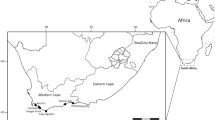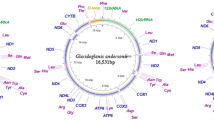Abstract
Genus Nassarius contains many subgenera, such as Zeuxis, Telasco, Niotha, Varicinassa, Plicarcularia, Nassarius s. str. and Reticunassa. On the basis of morphological characteristics of the shell and radula and sequences of mitochondrial cytochrome oxidase subunit I (COI) and 16S rRNA genes, Nassarius specimens collected from the South China Sea were identified and phylogenetically analyzed. Although Nassarius sp. and Nassarius (Varicinassa) variciferus were morphologically different in their shells, few variations were found among their radular teeth and sequences of mtCOI and mt16S RNA genes. Therefore, Nassarius sp. should be classified as N. (Varicinassa) variciferus. Nassarius (Zeuxis) sp. has only a subtle difference from Nassarius (Zeuxis) algidus on the shell, but it shows obvious differences in radular teeth and DNA sequence, indicating that they are two distinct species. Sequence divergence of mtCOI and mt16S RNA genes within Nassarius species was much lower than that between species, suggesting that these two genes are suitable for Nassarius species identification. Phylogenetic analysis (neighbor-joining and maximum parsimony) based on mtCOI and mt16S rRNA genes revealed the presence of two groups in genus Nassarius and a closest relationship between subgenera Zeuxis and Telasco. Species of subgenus Plicarcularia did not form a single clade. The molecular phylogeny was not congruent with the previous morphological phylogeny. The subgeneric divisions of genus Nassarius appear to be uncertain and unreliable.
Similar content being viewed by others
References
Bargues M D, Mas-Coma S. 1997. Phylogenetic analysis of Lymnaeid snails based on 18S rDNA sequences. Molecular Biology and Evolution, 14(5): 569–577.
Cernohorsky W O. 1984. Systematics of the family Nassariidae. Bulletin of the Auckland Institute and Museum, 14. p. 1–356.
Chiu Y W, Chen H C, Lee S C, et al. 2002. Morphometric analysis of shell and operculum variations in the viviparid snail, Cipangopaludina chinensis (Mollusca: Gastropoda), in Taiwan. Zoological studies, 41(3): 321–331.
Folmer O, Black M, Hoeh W, et al. 1994. DNA primers for amplification of mitochondrial cytochrome c oxidase subunit I from diverse metazoan invertebrates. Molecular Marine Biology and Biotechnology, 3: 294–299.
Franklin J B, Fernando S A, Chalke B A, et al. 2007. Radular morphology of conus (gastropoda: caenogastropoda: conidae) from India. Molluscan Research, 27: 111–122.
Haase M, Misof B, Wirth T, et al. 2003. Mitochondrial differentiation in a polymorphic land snail: evidence for Pleistocene survival within the boundaries of permafrost. Journal of Evolutionary Biology, 16: 415–428.
Haasl D M. 2000. Phylogenetic relationships among Nassariid gastropoda. Journal of Paleontology, 74(5): 839–852.
Hayashi S. 2005. The molecular phylogeny of the Buccinidae (Caenogastropoda: Neogastropoda) as inferred from the complete mitochondrial 16S rRNA gene sequences of selected representatives. Molluscan Research, 25(2): 85–98.
Keen A M. 1971. Sea shells of tropical west America; marine mollusks from Baja California to Peru, 2 nd edit. Stanford University Press, Stanford, California. p. 604.
Korte A, Armbruster G F J. 2003. Apomorphic and plesiomorphic ITS-1 rDNA patterns in morphologically similar snails (Stylommatophora: Vallonia), with estimate of divergence time. Journal of Zoology, 260: 275–283.
Li H T, Zhang J H, Dong Y H, et al. 2008. Identification for Nassarius of two shell morphological types. Oceanologia et Limnologia Sinica, 39(4): 388–394. (in Chinese with English abstract)
Palumbi S R. 1994. Genetic divergence, reproductive isolation, and marine speciation. Annual Review of Ecology and Systematics, 25: 547–572.
Park G M, Im K I, Yong T S. 2003. Phylogenetic relationship of ribosomal ITS2 and mitochondrial COI among diploid and triploid Paragonimus westermani isolates. The Korean Journal of Parasitology, 41(1): 47–55.
Pola M, Vallés Y, Cervera J L, et al. 2006. Taxonomic status of Tambja abdere and Tambja fusca based on morphological and molecular evidence, with comments on the phylogeny of the subfamily nembrothinae (Nudibranchia, Polyceridae). Annales Zoologici Fennici, 43: 52–64.
Ponder W F. 1973. The origin and evolution of the Neogastropoda. Malacologia, 12: 295–338.
Stothard J R, Llewellyn-Hughes J, Griffin C E, et al. 2002. Identification of snails within the Bulinus africanus group from East Africa by multiplex SnaPshot™ analysis of single nucleotide polymorphisms within the cytochrome oxidase subunit I. Memórias do Instituto Oswaldo Cruz, 97(suppl.): 31–36.
Teske P R, Papadopoulos I, McQuaid C D, et al. 2007. Climate change, genetics or human choice: Why were the shells of mankind’s earliest ornament larger in the Pleistocene than in the Holocene? PLoS ONE, 2(7): e614, doi:10.1371/journal.phone.0000614.
Wang W, Cai L Z, Liu W M. 2007. Morphological Classification of Nassariids in Fujian Coast. Journal of Xiamen University (Natural Science), 46(sup.1): 171–175. (in Chinese with English abstract)
Wilke T, Falniowski A. 2001. The genus Adriohydrobia (Hydrobiidae: Gastropoda): polytypic species or polymorphic populations? Journal of Zoological Systematic and Evolution Research, 39: 227–234.
Winnepenninckx B, Backeljau T, De Wachter R. 1993. Extraction of high molecular weight DNA from molluscs. Trends in Genetics, 9: 407.
Zhang A J, You Z J. 2007. A new species of Nassariidae from Zhejiang province, China (Gastropoda, Prosobranchia, Neogastropoda). Acta Zootaxonomica, 32(4): 900–902. (in Chinese with English abstract)
Author information
Authors and Affiliations
Corresponding author
Additional information
Supported by the Youth Science Foundation of the State Oceanic Administration (No. 2009106) and the Directorate Foundation of South China Sea Branch, the State Oceanic Administration (No. 0815)
Rights and permissions
About this article
Cite this article
Li, H., Lin, D., Fang, H. et al. Species identification and phylogenetic analysis of genus Nassarius (Nassariidae) based on mitochondrial genes. Chin. J. Ocean. Limnol. 28, 565–572 (2010). https://doi.org/10.1007/s00343-010-9031-4
Received:
Accepted:
Published:
Issue Date:
DOI: https://doi.org/10.1007/s00343-010-9031-4




